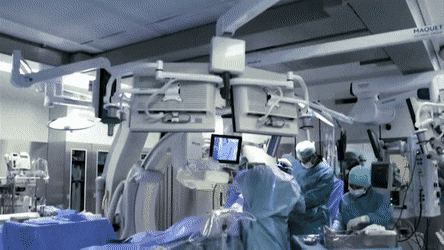Regarding operating room procedures and protocols, the stakes are high. Any breach in sterile practices can lead to infection, contamination and even death. When dealing with sensitive procedures that require maintaining a high level of sterility and cleanliness throughout the process, how do you create an effective protocol that prevents cross-contamination? Operating rooms are one of the most critical areas in any healthcare facility, so making sure they are as sanitary as possible is key. That’s why we’ve put together this list of essential tips on maintaining sterility in the operating room. Read on for more information about preventing cross-contamination in your OR. Read more on Medical Robots

Train your staff- Medical Robots
You’ll want to make sure all of your staff members are adequately trained in proper sterile procedures. Most healthcare facilities have standard training protocols you can follow to ensure your staff has the required knowledge, skill and ability to perform these procedures correctly. Additionally, you may want to consider investing in a training program that can help staff better understand the importance of maintaining the highest level of sterile practices. A well-trained staff will be crucial in helping you prevent cross-contamination and maintaining a sanitary operating room environment.
Install an effective air filtration system.
Air filtration systems are a great way to help prevent cross-contamination in the operating room. These systems can help trap harmful airborne particles such as dust, bacteria and other pathogens that can contaminate your operating room. Air filtration systems like HEPA filters are a great option for operating rooms because they can filter 99.97% of airborne particles as small as 0.3 microns. This is important because the air in your operating room needs to be completely free of bacteria. Air filtration systems are also a great way to help control the level of dust in your operating room. This is especially important during laser procedures, when a too high level of dust can interfere with the lasers.
Use double-ringed drapes
Another way to prevent cross-contamination in your operating room is to use double-ringed drapes. These drapes have a double ring of fabric that will help you maintain a clean, sanitary environment. Double-ringed drapes help prevent cross-contamination by allowing you to clean the outside of the drape after each procedure fully. This allows you to reduce the risk of bacteria or potential contaminants from making their way onto your drape and then being transferred to your next patient. Double-ringed drapes are a great option for any type of procedure where you need to isolate a section of the patient’s body. This includes procedures like knee and hip replacements, as well as abdominal surgeries.

Use physical barriers and barriers with antimicrobial properties
Physical barriers like surgical shields help prevent cross-contamination by creating a barrier between the patient and the healthcare professionals. While surgical shields are a great way to prevent cross-contamination, you’ll want to make sure they are cleaned and appropriately sterilized after each use. It’s also important to ensure they go back into the correct place after each procedure. Another way to prevent cross-contamination in your operating room is to use barriers with antimicrobial properties. This includes drapes and surgical gowns or scrubs that have built-in antimicrobial properties. These items can be especially helpful when dealing with patients who are extremely contagious, like those with the flu or MRSA.
Don’t forget to disinfect!
Finally, don’t forget to disinfect. No matter how careful you are with your sterile procedures, you’ll still want to disinfect your equipment after each procedure. For example, after each procedure, you’ll want to make sure to thoroughly clean and disinfect your surgical instruments. This will help prevent cross-contamination and make sure your next procedure goes smoothly. Similarly, you’ll also want to thoroughly disinfect your surgical drapes and other equipment that comes into contact with the patient after each procedure. Make sure to follow the disinfection protocol for your healthcare facility.
Conclusion
Maintaining sterility in the operating room is critical. Any breach in sterile practices can lead to infection, contamination, or even death. When you’re dealing with such sensitive procedures that require maintaining a high level of sterility, how do you create an effective protocol that prevents cross-contamination? When it comes to operating room procedures and protocols, the stakes are high. Any breach in sterile practices can lead to infection, contamination, or even death. However, when you’re dealing with such sensitive procedures that require maintaining a high level of sterility, how do you create an effective protocol that prevents cross-contamination? Fortunately, there are several ways to go about this. You’ll want to make sure all of your staff members are adequately trained, you have an effective air filtration system, and you use double-ringed drapes. Additionally, you’ll want to use physical barriers, like surgical shields, and use barriers with antimicrobial properties. Finally, don’t forget to disinfect your equipment after each procedure.